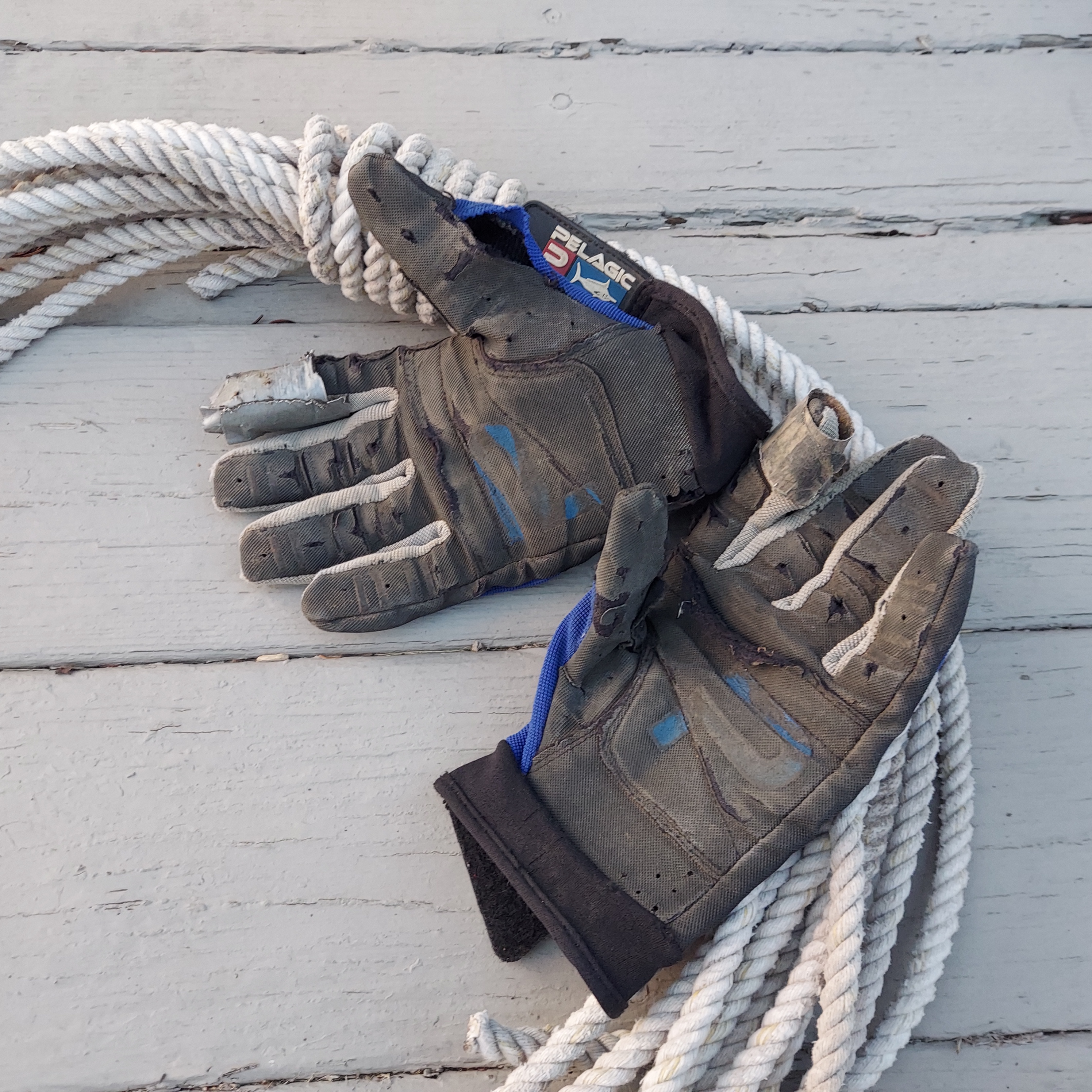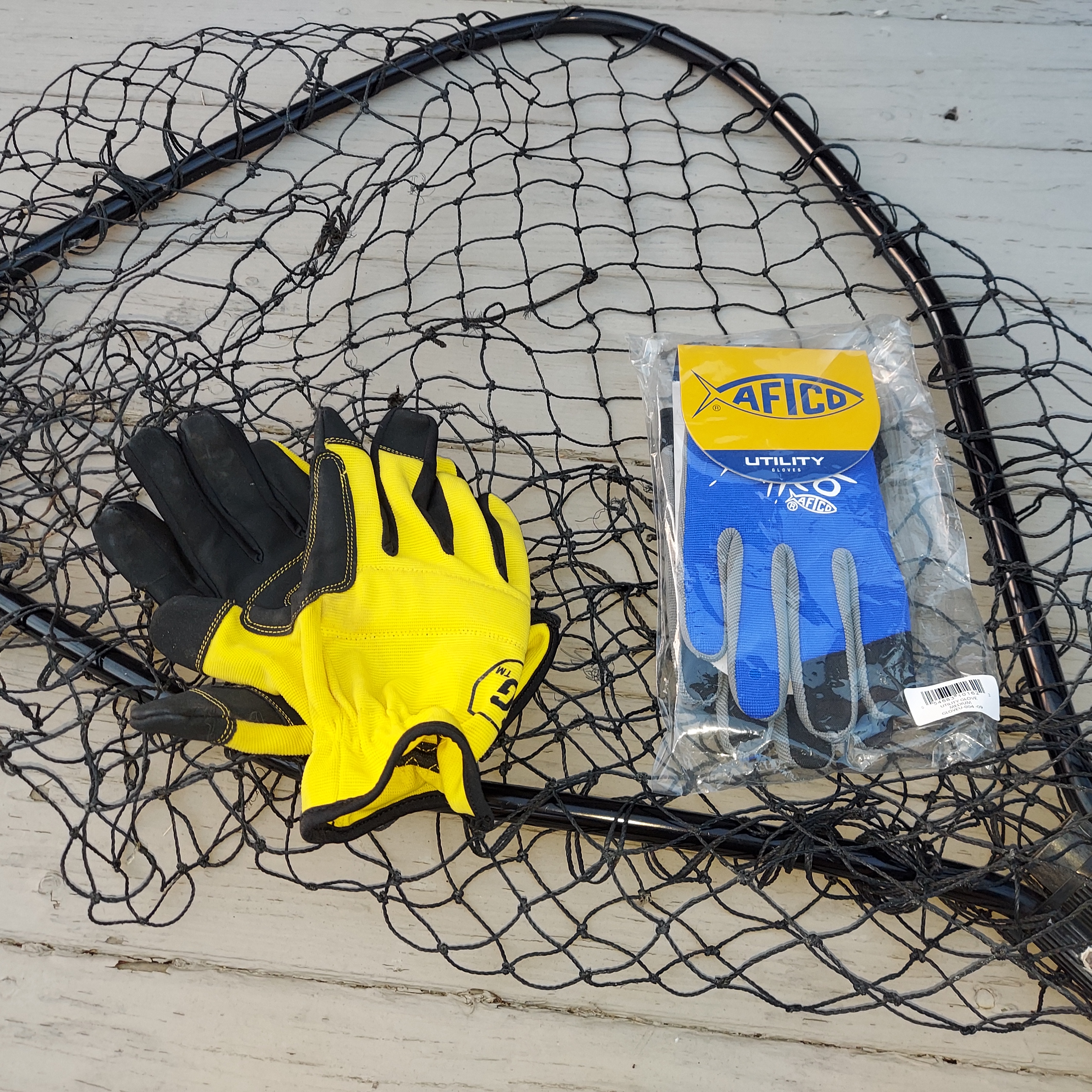Fits Like a Glove
Posted by Capt. Tom Migdalski on 19th Dec 2022
Fishing gloves protect you and the fish. Here’s how to buy the right pair for your needs this holiday season.
Like most longtime saltwater anglers, hooks, knives, teeth, fins, and gill plates have bitten, sliced, stabbed, chaffed, and scarred my hands. The latest stick by the dorsal fin of a schoolie bass hardly hurt, and I thought nothing more of it. But three days later, my palm was puffy, pink, and painful requiring a trip to Urgent Visit and a round of intravenous antibiotics followed by antibiotic pills (webmd.com/first-aid/wilderness-fish-handlers-disease). It was a hard way to learn a lesson from a simple schoolie-striper blitz.
“I always wear gloves when guiding or fishing,” says Capt. Ned Kittredge of Westport, MA, who has 45 years of inshore and offshore experience. “It’s important for the wellbeing of the fish and for the safety of the mate or angler. Modern braided lines are so thin and strong they slice like a razor, and even heavy mono does the same to wet skin. During offshore fishing they’re a must, and inshore if you’re handling many fish, they’re a requirement.”
According to Gill Marine (gillmarine.com), the primary functions of fishing gloves are protection and control. Protection means defending hands and fingers from fast-running lines, sharp gear, and sun exposure. Control means having a secure, confident grip on tackle or a gaff at critical moments, even though you’re soaked in sweat and saltwater in a rocking boat.
Many glove options are available for anglers and boaters, but there are several major factors to consider when making a purchase. These categories include style, durability, protection, cost, weather, and fit.

Style
The most obvious fishing glove option is open-fingered. Fingerless styles provide dexterity for working with hooks, tying knots, rigging leaders, working electronics, and taking photos. If you’re constantly re-rigging your tackle a fingerless model might be best.
The open-finger design allows for maximum dexterity and finger maneuverability according to Pelagic (PelagicGear.com), which increases angler skill and endurance; however, mates and guides benefit from a full-glove design for additional finger protection. Full gloves are crucial when leadering gamefish, handling fish, gaffing, removing hooks from a toothy predator, grabbing bills, and filleting.
Look for a pair that are well made, comfortable, and use proper padding and support in the right areas. Kevlar reinforcement is one key to durability. It’s also important that a glove isn’t too thick or rigid, which hinders dexterity and mobility when handling line or a fish. Most full-finger gloves aren’t compatible with smartphones; however, some are now touchscreen capable.
Anticipate the type of fishing you’re undertaking when choosing glove style. This will dictate whether you’re looking for heavy duty, full-fingered protective glove or a light pair offering stretch comfort, sun defense, and open fingers for tying knots.
Like other top fishing apparel manufacturers, AFTCO (aftco.com) makes gloves to fit all users. According to them, gloves protect you from line cuts, blisters, sticks from sharp gills or fins, and from sun damage. Gloves are designed for spin or conventional anglers using braided super-lines and often have Kevlar reinforced panels to protect the index finger and thumb areas for use with spinning or conventional outfits. Gloves can feature sun protection of at least 50 SPF.

Durability and Cost
Durability and cost are considerations when choosing a fishing glove. A glove made of high-quality materials will survive a long time. If you fish hard or often, select an expensive pair that will hold up to repeated abuse, including hauling dock and anchor lines. I’ve had a well-worn, torn-up pair for years, but I can’t quite part with them yet.
If you’re an occasional angler, you can choose much-less-expensive gloves with average durability and replace them as needed. A good example is the Gorilla Grip A5 Cut gloves that feature a breathable, flexible design with an ANSI level-5 industrial cut protection rating with polymer technology on the palm that wicks moisture and provides maximum grip in wet conditions. They’re only about $9 and are also favored by mechanics (https://gorillagripgloves.com/specialty-grip/gorilla-grip-ansi-a5-cut-protection/).
Anyone on the water is going to benefit from a good pair of fishing gloves. Whether you’re a big game tournament pro or just fishing inshore with the family there’s a great selection of performance gloves using the latest fabric developments offering grip, durability, and protection. Some anglers carry more than one type of glove for different uses and conditions.
Offshore charter mates prefer gloves constructed for leadering, gaffing, and handling large gamefish, as opposed to fine touch. AFTCO Release gloves feature full palm protection and Kevlar panels in the fingers to prevent line and leader cuts and abrasions. Their Utility gloves are a lighter-duty, full-fingered glove like their Release model but without the Kevlar.
AFTCO’s Wire Max is their heaviest-duty, full-Kevlar gloves, which are designed for wiring and leadering large billfish and tuna. They run about $80 and are available at places like Tackle Direct (tackledirect.com/aftco-wire-max-gloves.html). But before you get sticker shock, consider the value of your intact hands and fingers. They feature a closed-cell urethane inner skeleton with full outer Kevlar protection.
For captains and recreational anglers, manufacturers always offer light-duty gloves. Most are sun protectant and have a thinly padded, synthetic-leather palm, which makes gripping towers, steering wheels, rails, and gaffs easier, not to mention handling throttles, cellphones, and electronics. They’re also half the price.
Weather
Consider the weather where and when you fish. In a colder climate like early and late seasons in New England or the Pacific Northwest, insulation and heat retention are important features. In a hotter climate, consider sleeker options offering breathability to prevent moisture buildup and provide sun and puncture protection.
A positive development during recent years is the importance of sun protection. For example, Gill Marine gloves are independently tested and meet the 50-plus UPF rating. The latest generation of gloves like Gill’s have advanced fabric technology for UV protective garments during hot weather use.
At the opposite end of the temperature scale, there’s a need for gloves suited to cold and wet conditions. Look for insulated designs like neoprene that ensure you can still feel your fingers after plunging them in cold water. If you’re after an enhanced level of grip and increased protection, then the synthetic-leather palm, finger, and finger-tip coverage of a fully waterproof and thermally insulated glove could be the solution for your glove search.
An example of a good, half-finger, cold-weather glove is Cabela’s Guidewear Wind Stopper for about $35.
I also suggest checking your local power equipment store to look at chainsaw gloves, which like fishing gloves feature flexibility, feel, grip, durability, and protection. Stihl, for example, makes several good models ranging from light to heavy duty. Although water resistant, remember that chainsaw gloves are often made of real leather.
Fit
Wear your new gloves when the conditions are pleasant and work is light so you can adjust to their performance and break them in. Gaining confidence with the change in dexterity and grip (as opposed to bare hands) will save frustration, and you’ll be confident in your ability to operate gear and handle fish when conditions are challenging.
“The number-one glove priority,” says Capt. Ned Kittredge, “is they must fit like a second skin because feel and grip are essential when handling lines and leaders, and when you’re processing fish. Loose gloves can snag in moving parts like levelwinds.”
Always try on gloves for fit and comfort. A misplaced seam or too tight a fit quickly becomes irritating around saltwater. Many gloves come with an articulated fit, so there’s a natural, pre-curved shape to the fingers. For women, look for female-specific gloves, which have a narrower palm profile and shorter fingers.
A quick stop into a tackle shop or marine store like West Marine will allow you to try on gloves before buying. Then you’ll be ready to handle your lines, gear, and tackle box stocked with Game On! lures when the bite is on. And they’re a perfect gift for the holiday season.

